Are you looking for a little help figuring out what the difference between all the Rogue bars is without needing to make a spreadsheet and have 15 browser tabs open? If so, you have come to the right place!
Rogue Fitness has one of the most extensive collections of branded barbells around. It can be daunting trying to figure out which bar is the right bar for you. You can stare at product pages, compare numbers, and read reviews for hours; but about the time you think you’ve got a handle on all these bars, Rogue adds a couple more to the line-up, takes a few out of the line-up, and then slaps a new version number on everything else.
So how do you select the Rogue bar that’s right for you? Do you buy one of the new bars? Do you buy one of the updated bars? Do you just buy the bar that Joe Blow down the street swears by? Are they really all that different from one another anyway?
It turns out that almost every Rogue bar is different in one way or another. The good news is that more times than not, those differences are minor, and many of those differences are actually just cosmetic. Matter of fact, with the recent introduction of the new 190k steel that Rogue uses for bar shafts, Rogue doesn’t sell as many functionally unique bars as you may think.
So relax. I’ll bet by the time you’re done with this guide you’ll have gone from contemplating half a dozen Rogue bars and all their variants to narrowing it down to one or two. Your final decision will almost certainly just come down to aesthetics.
Last updated: September, 2018 (revisions and edits, added bars to list, added new update section.)
Suggested Reading
If you’re new to lifting and the terminology thrown around in this guide confuses you a little; things like bushings and bearings, tensile strength, zinc vs chrome; and so forth, I suggest you read the first section of an article of mine that covers practically every important aspect of bar construction. You can read that here.
How to Zero-In on a Rogue Bar
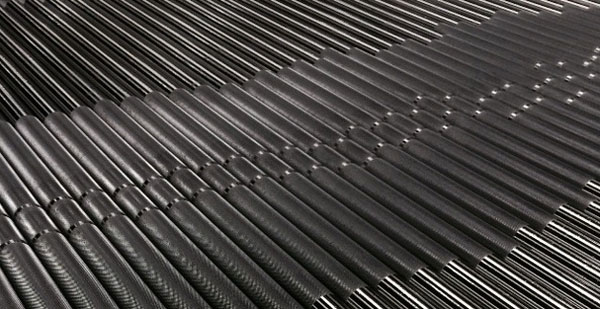
I’ve separated all of the Rogue bars into four categories based on their obvious or stated intended application (i.e. Oly, power, etc). With the exception of the women’s category and unless stated otherwise, all of the Rogue bars covered are standard 20 kg, 2.2 m (44 lbs, 7.2 feet) barbells. The categories, along with the bars they contain are as follows:
- CrossFit & General Strength Training Bars
- Rogue Echo Bar 2.0
- Rogue Bar 2.0
- Ohio Bar
- Cerakote Ohio Bar
- Rogue Freedom Bar (new)
- Stainless Steel Ohio Bar
- Rogue Castro Bar
- Rogue Operator 3.0
- Rogue Chan Bar 1.2
- Rogue Cerakote Chan Bar 1.2 (new)
- Women’s 15 kg Bars
- Bella Bar 2.0
- Cerakote Bella Bar 2.0
- Rogue 25 mm Freedom Bar
- Stainless Steel Bella Bar 2.0
- Women’s 25mm Pyrros Olympic WL Bar
- Women’s 25mm Olympic WL Bar
- Women’s 25mm Russian Bar
- Women’s 25mm Training Bar
- Women’s Burgener & Rippetoe Bar (B&R)
- True 28 mm Olympic Weightlifting Bars
- 28mm Olympic Training Bar (all)
- 28 mm Olympic WL Bar (all)
- Euro Olympic WL Bar
- Pyrros Olympic WL Bar
- Rogue Russian Bar
- Powerlifting Bars
- Ohio Power Bar
- Westside Power Bar 2.0
- Burgener & Rippetoe 2.0
- Ohio Deadlift Bar
- Recommendations
Once you’ve decide which category best describes your intended application, you can look through the bars and further refine them by price, finish, knurl depth, and cosmetic or other special features (I will include a TL;DR at the end for those who can’t be bothered). Once you’ve selected a bar, you can either go with that bar, or begin the process anew by then comparing your choice to the other manufacturers’ bars until you’ve found the perfect bar for you.
Some Update Notes for 2018
Rogue has added fewer barbells in recent years and even removed a number of them from their line-up, but they still have more bar options than any other manufacturer. Matter of fact Rogue has been adding new material and finish options to the vast majority of their existing bars; adding stainless steel variants, colored and clear Cerakote variants, and so on; giving us aesthetic options galore. There are definitely a lot of Rogue bars to choose from today.
There’s only so much you can do to expand a collection like Rogue’s when the lowest price bar is $200. They’d basically have to offer cheap economy bars rather than premium bars in order to grow the collection any more. Also, it should be noted that both stainless steel and Cerakote are premium, very durable materials for barbells, so don’t think of these as simply cosmetic upgrades (though the colors do seem to be a big part of the appeal).
The F-Scale
One thing Rogue has done recently is to roll out a new grading system for their bars – the F-Scale. The F-Scale is effectively a grading system for the bar’s durability. It factors in the materials used to manufacture the bar, the finish applied to the bar, and a Rogue-exclusive “treatment” called Rogue Work Hardening; or RWH. From what I can tell RWH is applied to all of Rogue’s bars.

I’ve read the material on the F-Scale and RWH numerous times and I still don’t know what RWH actually is; that section is very vague. I don’t know if it’s a heat treatment, a chemical additive, or a magical spell. Since I don’t know what it is, I don’t see how it’s helpful to even know about it. But hey, maybe I’m missing something?
The F-Scale can be helpful, but only when comparing a Rogue bar to another Rogue bar. I don’t think it does much to assist with Rogue to other brand comparisons, at least not until some more detailed info is released on the RWH process. We just can’t make reasonable feature comparisons when we don’t know what all the features are.
The premise of the F-Scale; even when ignoring RWH; is legit though. Things like hydrogen embrittlement are very real, so I do like the scale I just think RWH is too mysterious.
The Rogue Bars for CrossFit
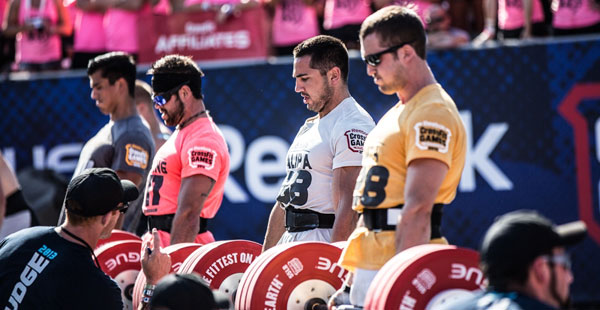
Clearly Rogue’s biggest market, these are the mulit-purpose bars designed with CrossFit in mind. All of the Rogue bars in this category are 20 kg, 190,000 PSI bushing bars with 28.5 mm shafts. They are all dual-marked (IPF/IWF) except for the Echo, have either no center or a passive center knurling, and an about average knurl depth (with the exception of the Chan Bar). With all these things being equal, I will only address things that differentiate the bars from one another and make them unique. Prices range from $195-$395.
The Rogue Echo Bar 2.0
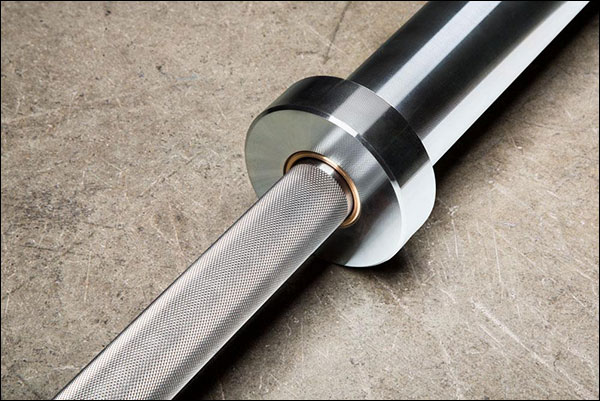
The Echo 2.0 is Rogue’s economy barbell. In terms of specifications it’s almost exactly the same as the Rogue Ohio Bar, only it doesn’t have the dual-markings (only IWF marks) and it carries a short, one-year warranty (vs lifetime warranty). The original version of the Rogue Echo actually had cheap pinned sleeves, yet it sold for the same $195 – so the 2.0 is really quite an upgrade. The 1-year warranty sucks, but if economy bars are your only option this certainly beats a box-store barbell.
Rogue Echo Bar 2.0 At-a-Glance
- Knurling: moderate/average
- Whip: normal/average
- Finish: bright zinc
- Loadable Sleeve Length: 16.4″
- IWF hash marks only
- Short 1-year warranty
- Almost a beater bar, yet almost the Ohio Bar
- Made in Ohio $195
The Rogue Bar 2.0
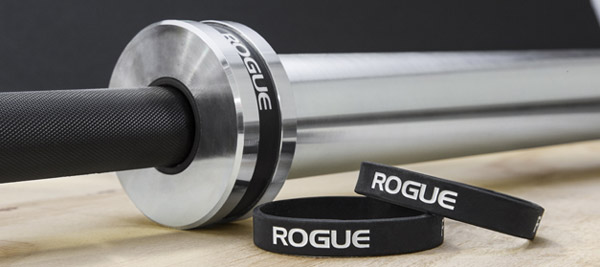
The Rogue Bar 2.0 is a black zinc barbell with bright zinc sleeves. There are two things that make it stand out from the others. First is that it uses composite bushings rather than cast bronze, and second, we have the ability to customize the look of the bar with colored bands that sit in machined grooves on the collars. The Rogue Bar is one of the better priced bars on the market right now and a nice alternative to the zinc & oxide versions of the Ohio. The Rogue Bar is $255 with a 5-star review rating (160+ reviews).
Rogue Bar 2.0 At-a-Glance
- Knurling: moderate/average
- Whip: normal/average
- Finish: black/bright zinc
- Loadable Sleeve Length: 16.4″
- Composite bushings
- Rogue’s composite bushings are no quieter than their bronze bushings
- Machined band groove for bar customization
- Made in Ohio $255
The Ohio Bar
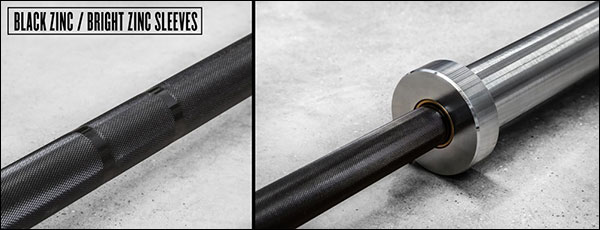
This is Rogue’s Flagship bar; it was the first bar to be completely manufactured at Rogue HQ in Ohio. There is nothing especially appealing about this bar anymore now that the 2.0 can be had for $30 less. The Ohio and the 2.0 have the same specifications, same default finish, yet the 2.0 also has some unique features like the grooved sleeves and composite bushings. Also bars like the new SS Ohio and Matt Chan are often no-brainer upgrades to the classic Ohio.
Of course there is the black oxide finish option for the Ohio which is pretty cool, but other than that it’s a pretty basic bar. Prices range from $282 – $295 depending on finish.
Ohio Bar At-a-Glance
- Knurling: moderate/average
- Whip: normal/average
- Loadable Sleeve Length: 16.4″
- The only black oxide variant of Rogue’s multi-purpose line
- Chrome is no longer offered, but stainless and Cerakote is (next two listings)
- Made in Ohio $282-$295
Cerakote Ohio Bar
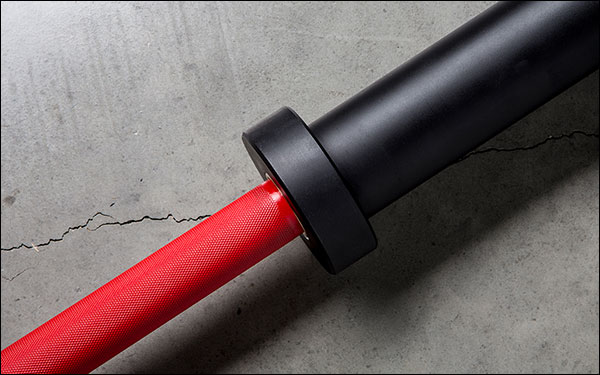
The Cerakote Ohio Bar is exactly the same as the standard Ohio Bar in terms of specs, but instead of zinc or oxide it’s finished with Cerakote ceramic. Currently there are (19) different color options for the Cerakote Ohio Bar; though expect that number to change over time. If you want more information on Cerakote, I will suggest you read my review of the American Barbell Cerakote California Bar here.
Cerakote Ohio Bar At-a-Glance
- Knurling: moderate/average
- Whip: normal/average
- Loadable Sleeve Length: 16.4″
- Cerakote offers a firm grip and good oxidation resistance, as well as fun color options
- Finish is available in (18+) different color options
- Made in Ohio $325
Rogue Freedom Bar
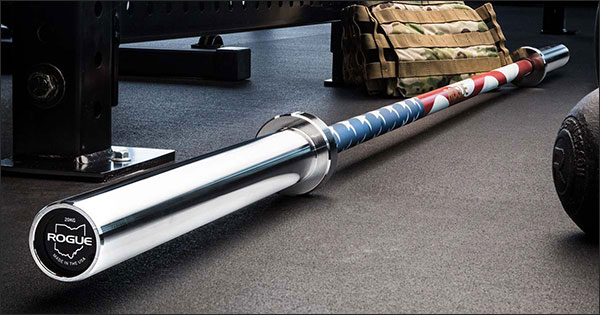
The Rogue Freedom Bar is a special edition colorway of the Rogue Cerakote Ohio Bar that, as you can clearly see, is the American flag. It sports all of the same specs and features of the Cerakote Ohio including a 28.5 mm 190k PSI shaft, dual markings, composite bushings and a lifetime warranty. And yes, it’s made in the US of A.
Freedom Bar At-a-Glance
- Knurling: moderate/average
- Whip: normal/average
- Loadable Sleeve Length: 16.4″
- American flag colorway of the Cerakote Ohio Bar
- Chrome sleeves
- Made in Ohio $395
The Stainless Steel Ohio Bar
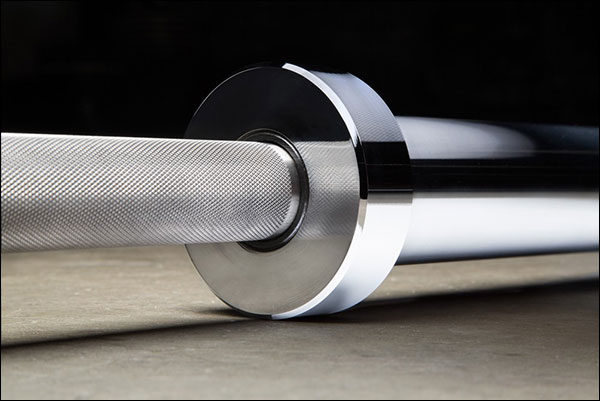
The Stainless Steel Ohio Bar is Rogue’s contribution to the growing stainless steel market. In my opinion, the SS Ohio is a much nicer bar than the classic Ohio bars. It has a higher tensile strength shaft, composite bushings, chromed sleeves, and a superior knurl pattern. All of this in combination with the stainless shaft and you’ve got one of the best all around bars that Rogue offers. For all the improvements, this bar should not even be thought of as expensive at $350.
Stainless Steel Ohio Bar At-a-Glance
- Knurling: moderately aggressive/firm
- Whip: normal/average
- Higher tensile strength rating of 200k PSI
- Loadable Sleeve Length: 16.4″
- Slightly quieter than other Ohio variants
- Stainless shaft offers the best protection from oxidation, and the most natural grip
- Chrome sleeves instead of zinc/oxide
- Front-runner in current Rogue multi-purpose line-up
- See my review of the SS Ohio
- Made in Ohio $350
The Rogue Castro Bar
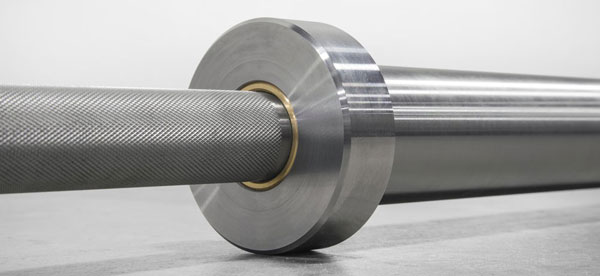
The Castro Bar is a raw steel Ohio Bar variant. Raw steel means it has no finish and that it requires the most maintenance (3-in-1 oil) of any of the bars in this category. Some people (myself included) actually prefer the feel of a bare steel bar and don’t view this as a burden, but I’m certain most will not be too excited about cleaning their bar every week.
Some proceeds from the sale of the Castro Bar are given to the families of two fallen Navy SEALs. $262
Castro Bar At-a-Glance
- Knurling: moderate/average
- Whip: normal/average
- Loadable Sleeve Length: 16.5″
- Bare steel; natural feel, but requires brushing and oiling to prevent oxidation
- Part of proceeds of each sale are donated
- Made in Ohio $262
Froning Bushing Bar
 The Rich Froning barbells have been discontinued, but for reference it was indeed another Ohio variant.
The Rich Froning barbells have been discontinued, but for reference it was indeed another Ohio variant. Rogue Operator Bar 3.0
The Operator Bar is a military-inspired barbell that used to feature black zinc sleeves and an olive drab shaft. Now it features a ceramic Cerakote shaft and Cerakote sleeves. While unique cosmetically, functionally this is no different than a Cerakote Ohio Bar.
Rogue Operator 2.0 Bar At-a-Glance
- Knurling: Rogue standard; consistent with Ohio Bars
- Whip: normal/average
- Loadable Sleeve Length: 16.4″
- Cerakote shaft finish with zinc sleeves
- Available in Desert Tan or classic Olive Drab
- Made in Ohio $325
- Also available in Camouflage for $375
Rogue Matt Chan Bar 1.2
This is the most unique bar in the bunch, and one of my long-time favorites. The Chan Bar is a modified Ohio Bar. The knurl on the Chan Bar is more aggressive than the other Ohio variants, and that knurling is set further away from center to allow for a wider stance with deadlifts. It’s also the only bar in this group to have a passive center knurling.
The original Chan is only available in black zinc. It has a 5-star rating, of course.
Rogue Chan Signature Bar At-a-Glance
- Knurling: semi-aggressive
- Center knurl: present and passive
- Increased distance between outer knurling for shins (deadlifts)
- Whip: normal/average
- Loadable Sleeve Length: 16.5″
- Satin chrome finish is discontinued indefinitely
- Most versatile bar in CrossFit category
- See my review of the Matt Chan Bar
- Black zinc Chan: $295
Rogue Cerakote Matt Chan Bar 1.2

The newer Matt Chan Bar 1.2 is a little improved over the original. It features a 200,000 PSI stainless steel shaft, composite bushing system, and a black Cerakote shaft with the option for black Cerakote sleeves or chrome sleeves. This variant features the same knurl pattern and knurl depth of the original and also maintains the passive center knurling (a feature not found on the other Ohio-line bars.) It will set you back $100 more though.
The Cerakote/chrome Chan may very well be Rogue’s nicest multi-purpose bar.
Rogue Cerakote Chan Bar At-a-Glance
- Knurling: semi-aggressive
- Center knurl: present and passive
- Stainless steel shaft at 200k PSI
- Increased distance between outer knurling for shins (deadlifts)
- Whip: normal/average
- Loadable Sleeve Length: 16.5″
- Composite bushings
- Available with chrome or Cerakote sleeves
- Most versatile bar in CrossFit category
- See my review of the original Matt Chan Bar
- Black Cerakote Chan: $395
♦ ♦ ♦
Rogue Women’s 15 kg Bars
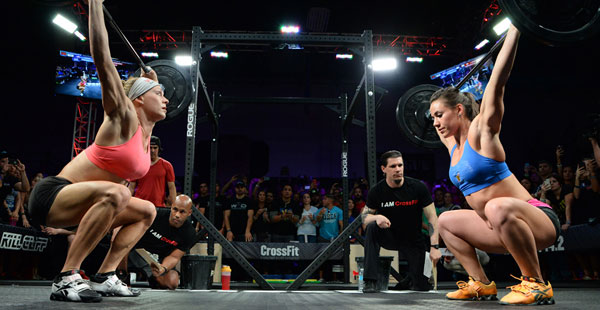
Women’s bars are 15 kg rather than 20 kg, and they have a 25 mm shaft rather than a 28+ mm shaft. They are also shorter in overall length than men’s bars (2010 mm vs 2200 mm, with the length coming off the sleeves). Rogue currently manufacturers only a handful of 15 kg barbells when compared to their selection of 20 kg barbells, but that collection is always growing. Prices start at $205.
The Bella Bar 2.0
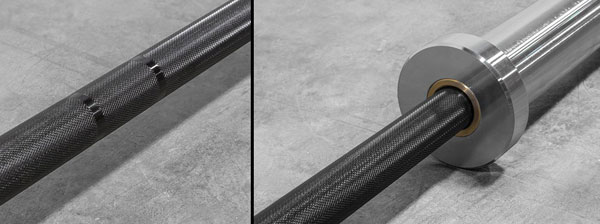
The Bella is a CrossFit bar, and a multi-purpose bar. I think of it as the true ladies version of the Rogue Bar 2.0; same 190k PSI steel and the same zinc coating. It’s a dual-marked bar, has no center knurl, and the sleeves spin on bronze bushings. Like The Rogue Bar, this is a mighty fine bar; especially for the price. $215
Rogue Bella Bar 2.0 At-a-Glance
- Knurling: mild/moderate
- Whip: normal/average
- Finish: black zinc/bright zinc.
- Total bar length: 79.13″
- Loadable Sleeve Length: 13″
- Comparable to the men’s Rogue Bar 2.0
- See my review here
- Made in Ohio $215
Cerakote Bella Bar 2.0
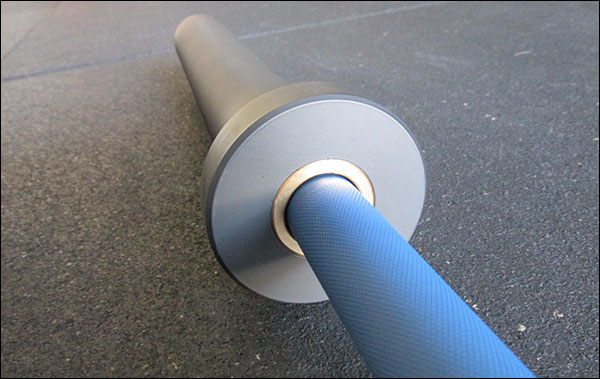
The Cerakote Bella Bar is exactly the same as the standard Bella Bar in terms of specs, but instead of being finished in zinc, it’s finished with Cerakote ceramic. Currently there are (24) different color options for the Cerakote Bella Bar 2, but expect that number to change over time. For more information on this particular bar or just Cerakote in general, check out my Cerakote Bella Bar review.
Rogue Bella Bar 2.0 At-a-Glance
- Knurling: mild/moderate
- Whip: normal/average
- Total bar length: 79.13″
- Loadable Sleeve Length: 13″
- Cerakote offers a firm grip and good oxidation resistance, as well as fun color options
- Currently available in (24) different color options
- Made in Ohio $275
Note: there are also athlete editions of the Bella Bar including the Froning, Fraser, Toomey, and Davidsdottir; each with their own theme and custom artwork. $375 each.
Rogue 25 mm Freedom Bar

Rogue’s Freedom Bar is a special edition colorway of the Cerakote Bella Bar which, as you can clearly see, is the American flag. It has all of the same specifications & features of the Cerakote Bella including a 25 mm, 190k PSI shaft, dual markings, composite bushings and a lifetime warranty. And yes, it’s made in the USA.
25 mm Freedom Bar At-a-Glance
- Knurling: moderate/average
- Whip: normal/average
- Loadable Sleeve Length: 13″
- American flag colorway of the Cerakote Bella Bar
- Chrome sleeves
- Made in Ohio $395
Stainless Steel Bella Bar 2.0
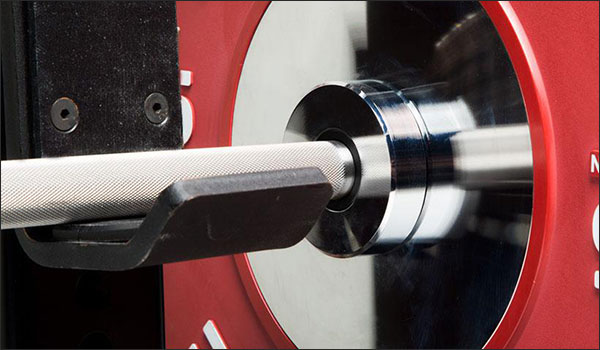
The Stainless Steel Bella is another addition to Rogue’s growing stainless barbell collection. Based on my experience with the SS Ohio, the SS Bella 2.0 will be a far superior bar to the standard zinc Bella 2.0. It has a higher tensile strength shaft, composite bushings, chromed sleeves, and a superior knurl. Like the SS Ohio Bar, this bar should not even be thought of as expensive at $350.
Stainless Steel Bella Bar At-a-Glance
- Knurling: moderately aggressive/firm
- Whip: normal/average
- Higher tensile strength rating of 200k PSI
- Loadable Sleeve Length: 13″
- Stainless shaft offers the best protection from oxidation, and the most natural grip
- Chrome sleeves instead of zinc/oxide
- Made in Ohio $315
Rogue Women’s Pyrros Bar
The Pyrros Bar is a collaboration with Rogue Fitness and you guessed it, Pyrros Dimas. It is basically a updated, 15 kg version of the Stainless Steel Olympic WL Bar that has more aggressive knurling than Rogue’s “standard knurl”, less erratic sleeve rotation, and custom Greek-themed Pyrros end-caps. It’s a nice addition to the Oly bar line-up being that it has some unique features to it.
Rogue Women’s Pyrros Bar At-a-Glance
- Knurling: moderately aggressive
- Whip: high
- Total bar length: 79.14″
- Loadable Sleeve Length: 12.5″
- Needle bearing bar
- 195k stainless steel shaft w/ chrome sleeves
- Made in Ohio $635
Rogue Women’s Olympic WL Bar
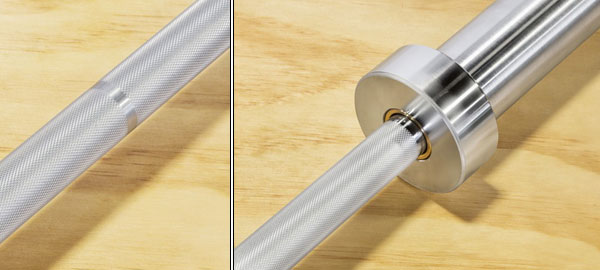
This is the women’s version of the Rogue Olympic WL Bar, but it shares steel with the Euro Bar rather than the men’s version of this bar.
The Women’s Olympic WL Bar has a 25 mm, 215k PSI steel shaft, Olympic hash marks, no center knurl, and the sleeves rotate on five bearings per sleeve. As the name implies this is a bar designed specifically for the Olympic lifts. It’s available with the same finish options as the men’s; bright zinc, polished chrome, or as a stainless steel bar. $525-$635
Rogue Women’s Olympic WL Bar At-a-Glance
- Knurling: moderately aggressive
- Whip: high
- Total bar length: 79.13″
- Loadable Sleeve Length: 13″
- Needle bearing bar
- Available in bright zinc, polished chrome, or stainless steel
- Made in Ohio
- Zinc and chrome variants: $525-$635
- Stainless steel variant: $635
Rogue Women’s Russian Bar w/ Collars
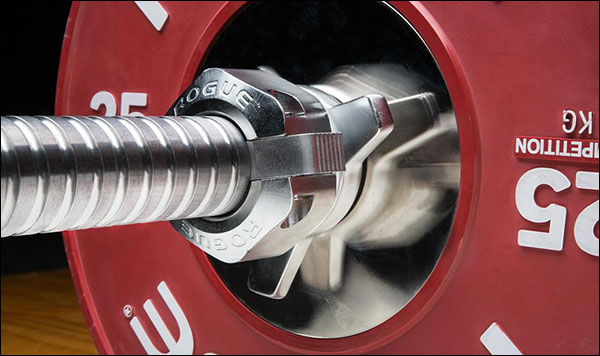
Rogue’s Russian Bearing Bar was inspired by an old Soviet design that was used in the ’80 Olympics. The bar has grooved sleeves and custom, weighted collars that lock down more securely than is possible with standard collars. This set up basically allows for long training sessions without having to make collar adjustments. The shaft itself is identical to that of a 25 mm Rogue Oly Bar discussed above, so you can expect great whip and performance.
Rogue Women’s Russian Bar At-a-Glance
- Knurling: moderately aggressive
- Whip: high
- Total bar length: 79.12″
- Loadable Sleeve Length: 12.5″
- Needle bearing bar
- Polished chrome finish
- (2) 2.5 kg collars included (5 kg total)
- Inspired by Russians, but made in Ohio $769
Rogue Women’s 25 mm Training Bar
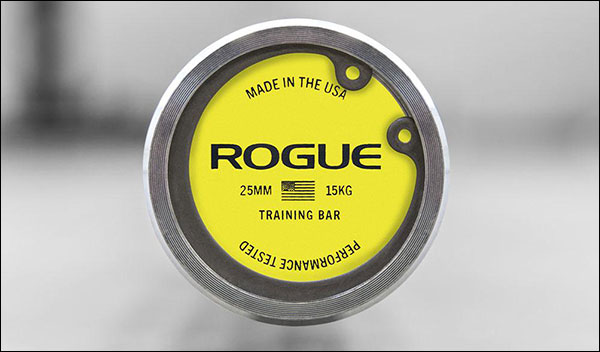
This is the women’s variant of the men’s 28 mm Training Bar. Training bars are essentially bushing-based versions of the Rogue Olympic WL Bars. By using 190k steel, a black zinc shaft finish, and bronze bushings instead of needle bearings, the price is greatly reduced. This bar is a cost-effective way for a novice to train the Olympic lifts.
Rogue Women’s 25 mm Training Bar At-a-Glance
- Knurling: moderately aggressive
- Whip: normal/average
- Total bar length: 79.12″
- Loadable Sleeve Length: 13″
- bronze bushing bar
- black zinc shaft, bright zinc sleeves
- Made in Ohio $305
Burgener & Rippetoe Women’s Bar 2.0
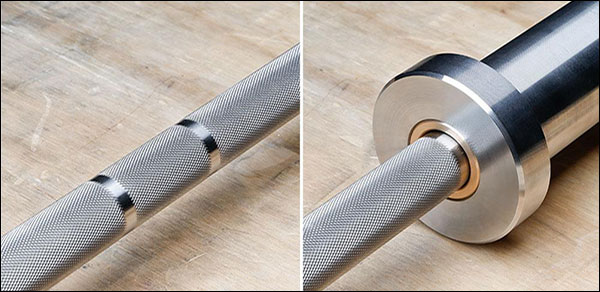
What used to be a York Barbell product is now a Rogue Fitness product.
The infamous men’s B&R got a steel upgrade when Rogue took over, but the women’s B&R isn’t anything special aside from the fact that it’s raw steel and inexpensive. At 190,000 PSI the women’s B&R is basically an unfinished version of the Bella. It’s not a very popular bar considering that women powerlifters use the same bars as men and bare steel is typically a powerlifting kind of thing. It’s a great price though; no doubt.
Burgener & Rippetoe Women’s Bar 2.0 At-a-Glance
- Knurling: mild/moderate
- Whip: normal/average
- Total bar length: 79.13″
- Loadable Sleeve Length: 13″
- Dual-marked with no center knurl
- Both shaft and sleeves are unfinished, raw steel
- Made in Ohio $205
♦ ♦ ♦
Rogue True 28 mm Olympic WL Bars
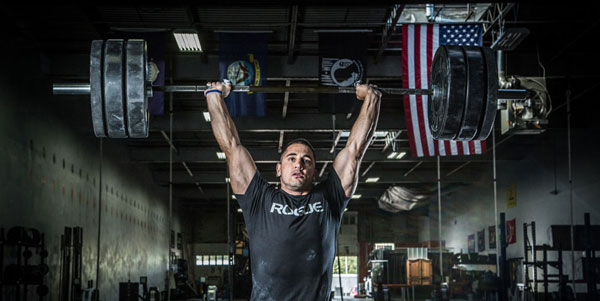
All of the bars in this category are true 28 mm barbells with a minimum 190,000 PSI rating. They are all marked only for the Olympic lifts. These are high whip bearing bars with more aggressive knurling than the CrossFit/multi-purpose bars; however, the 28mm Training Bar does have bushings instead of bearings.
These bars would also be great CrossFit bars if you’re willing to pay the premium for needle bearings. Both the knurl quality and elasticity of Oly bar shafts will be much improved over the WOD bars. Prices start at $325.
Rogue 28 mm Olympic Training Bar
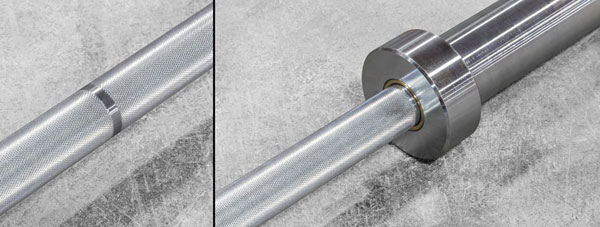
This bar is intended to be an economical way for a less experienced Olympic athlete to get under a true 28 mm bar. The shaft of this bar is identical to the Rogue Olympic WL Bar, but the sleeves are assembled with bushings rather than needle bearings. The Training bar has a black zinc shaft and bright zinc sleeves, and the whip is the same as the Rogue Oly Bar. Three Cerakote colorways are now available as well.
28mm Training Bar Bar At-a-Glance
- Knurling: moderately aggressive
- Whip: above average
- Loadable Sleeve Length: 16.25″
- Economy 28 mm Olympic bar
- Only 28 mm Olympic bar to use bushings rather than bearings
- Made in Ohio $295
- Cerakote Edition $325
Rogue Olympic WL Bar
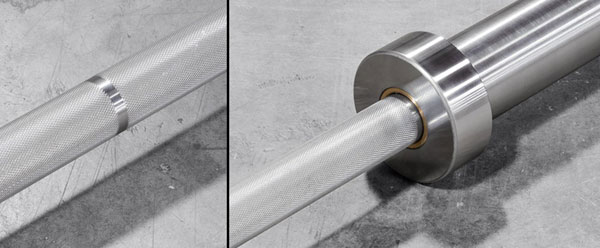
The Olympic WL bars are intended to be more reasonably priced competition for the high-dollar imports (NxG, Werksan, etc.) It features Rogue’s standard 190,000 PSI shaft and standard Olympic knurling, and the sleeve spin on five needle bearings.
This bar can be purchased with a bright zinc or polished chrome finish, or with a stainless steel shaft. All three of these variants have no center knurl, but the zinc and chrome bars can be ordered optionally with the center knurl. The zinc version can also be ordered with blue inner bushings. Prices vary by finish; from $525 to $695.
Cerakote is now available as well, including two clear Cerakote finishes.
Rogue Olympic WL Bar At-a-Glance
- Knurling: moderately aggressive
- Optional center knurling
- Whip: above average
- Loadable Sleeve Length: 16.25″
- Used in multiple CrossFit Games
- Made in Ohio $525-$635
- Stainless Steel variant $695
- Cerakote variant $545
Rogue Euro Olympic WL Bar
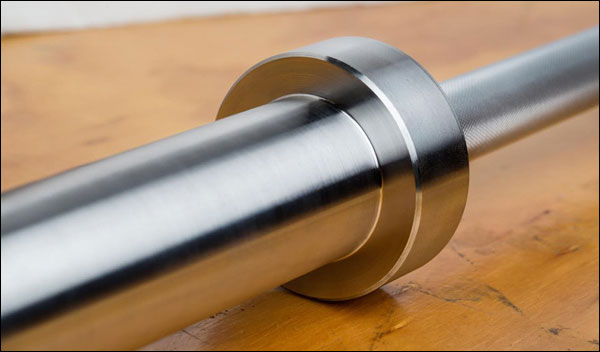
The Euro Olympic WL bar is Rogue’s attempt to directly rival professional weightlifting bars like those from NxG, WerkSan, and Uesaka. The Euro is made in the US, but the shaft is European sourced and worked steel. The specifications are completely on par with NxG at 215,000 PSI, 10 needle bearings, and a full polished chrome finish.
The Euro is a fantastic Oly bar but the knurl is less aggressive than you’d think. This bar is also pending IWF certification, so expect a price increase when that happens.
Rogue Euro Olympic WL Bar At-a-Glance
- Knurl: moderately aggressive
- Passive center knurl
- High whip
- Loadable Sleeve Length: 16.25″
- European-sourced steel
- Fully to IWF specifications
- Made in Ohio $695
Rogue Pyrros Olympic WL Bar
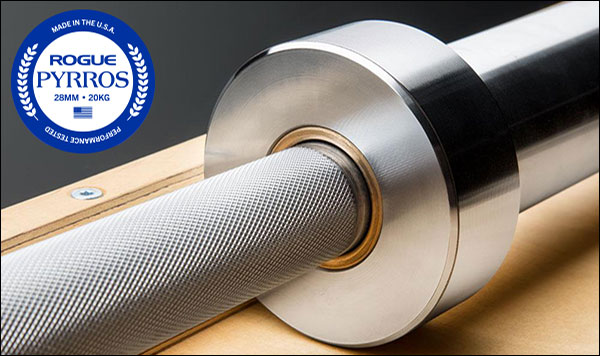
The Pyrros Bar is a collaboration with Rogue Fitness and you guessed it, Pyrros Dimas. It is basically a new and updated version of the Stainless Steel Olympic WL Bar that has more aggressive knurling than Rogue’s “standard knurl”, a center knurl, less erratic sleeve rotation, and custom Greek-themed Pyrros end-caps. It’s a nice addition to the Oly bar line-up being that it has some unique features to it.
Rogue Pyrros Olympic WL Bar At-a-Glance
- Knurl: aggressive
- Passive center knurl
- High whip
- Loadable Sleeve Length: 16.3″
- Stainless steel shaft w/ chrome sleeves
- Needle bearings are greased with more viscous lubricant
- Fully to IWF specifications
- Made in Ohio $695
Froning Bearing Bar

The Froning Bearing Bar has been discontinued.
Burgener Bearing Bar
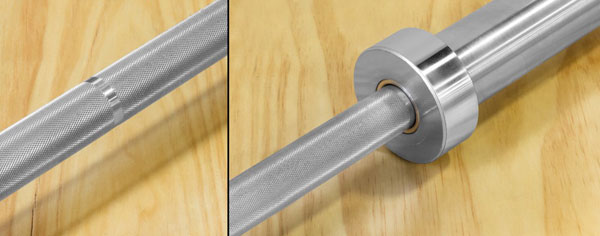
The Mike Bergener Bearing Bar has been discontinued.
Rogue Russian Bar w/ Collars

Rogue’s Russian Bearing Bar was inspired by an old Soviet design that was used in the ’80 Olympics. The bar has grooved sleeves and custom, weighted collars that lock down more securely than is possible with standard collars. This set up basically allows for long training sessions without having to make collar adjustments. The shaft itself is identical to that of a 28 mm Euro Bar discussed above, so you can expect great whip and performance.
Rogue Women’s Russian Bar At-a-Glance
- Knurling: moderately aggressive
- Whip: high
- Total bar length: 86.5″
- Loadable Sleeve Length: 16.25″
- Needle bearing bar
- Polished chrome finish
- (2) 2.5 kg collars included (5 kg total)
- Inspired by Russians, but made in Ohio $769
♦ ♦ ♦
Rogue Powerlifting Bars
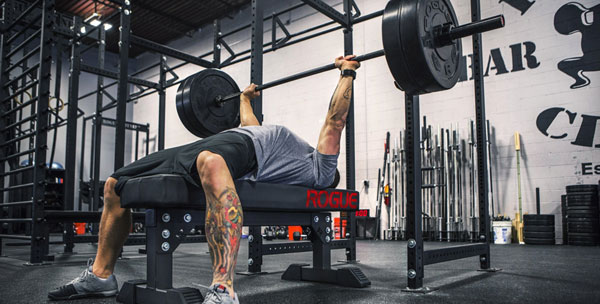
The power bars are just that; they serve no real purpose outside of the sport of powerlifting. They are so rigid that they make awful bars for clean & jerks and snatches, and the overly aggressive knurling is far less than idea for high-rep sets.
The following Rogue power bars are all 29 mm bars except for the 27 mm Ohio Deadlift Bar. I’ve included the B&R 2.0 in the power bar section because honestly that’s what it is.
Rogue Ohio Power Bar
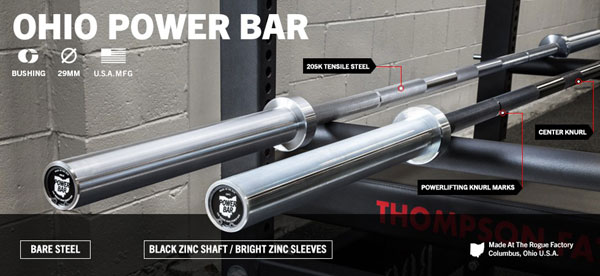
The highly anticipated upgrade to the Rogue Power Bar is here. The Ohio Power Bar is a 29 mm power bar rated at 205,000 PSI. This bar has aggressive knurling, is marked solely for powerlifting, and does have a center knurl. This bushing bar is available in a bare steel, zinc finished, or stainless steel 45-pound version, and an IPF-certified 20 kg version. The $250 bare steel OPB is probably the best priced power bar in the world for its specs.
Rogue Ohio Power Bar At-a-Glance
- Knurling: aggressive
- Center knurl: yes
- Whip: none; very rigid
- Loadable Sleeve Length: 16.25″
- Available in bare steel or zinc
- Available in 20 kg bar or 45-pound bar
- Made in Ohio
- $250-$395 in pounds
- $325 for IPF-certified kilogram OHP
A Thor edition exists with custom colorway and artwork; offered in pounds or kilos. $395
Rogue Power Bar
The Rogue Power Bar has been discontinued; replaced with the Ohio Power Bar variants.
Westside Power Bar 2.0
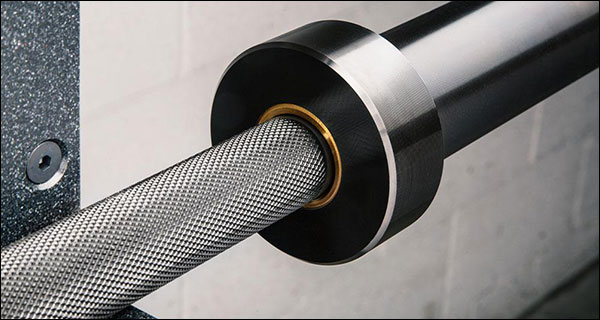
Rogue recently updated the Westside Power Bar to be more in line with the Ohio Power Bar in terms of pricing. At $375, the original Westside was not priced competitively enough to really even be a contender in the power bar market. No worries; the price of the 2.0 came down $50 to only $325.
The Westside Power Bar 2.0 is exactly the same as the 45-pound Ohio Power Bar save for murdered out black finish, though the price is the same as the certified 20 kg Ohio Power Bar. You have to want to support Louie to justify buying this over the OHP.
Westside Power Bar 2.0 At-a-Glance
- Knurling: aggressive
- 205k PSI shaft; very rigid
- Black zinc finish throughout
- This bar is in pounds, not kilograms
- Loadable Sleeve Length: 16.25″
- Made in Ohio $325
Burgener & Rippetoe Bar 2.0 (B&R)
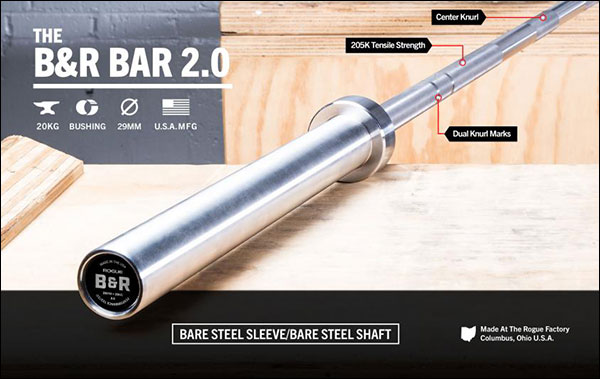
The Burgener & Rippetoe Bar; better known as the B&R bar; is no longer made by York Barbell. The B&R 2.0 is now officially a Rogue bar.
The original B&R was a very popular bar as it was but Rogue made some minor changes to it; some neat, some not so much. What’s neat is that the shaft steel was bumped up from 190k PSI to 205k PSI, making it more of a power bar than Oly bar. This is fine because this is basically what it was being used for anyway.
Rogue also replaced the sintered bronze bushings that York used with their cast bronze bushings. Rogue also removed the bolt-on end cap that gave the B&R its style. Other than that, same bare steel, dual-marked bar.
Burgener & Rippetoe Bar 2.0 At-a-Glance
- Knurling: moderately aggressive
- 205k PSI shaft; very rigid
- Raw steel – no finish
- Dual-marked bar with center knurl, but 29 mm shaft
- Loadable Sleeve Length: 16.25″
- Made in Ohio $295
Rogue Ohio Deadlift Bar
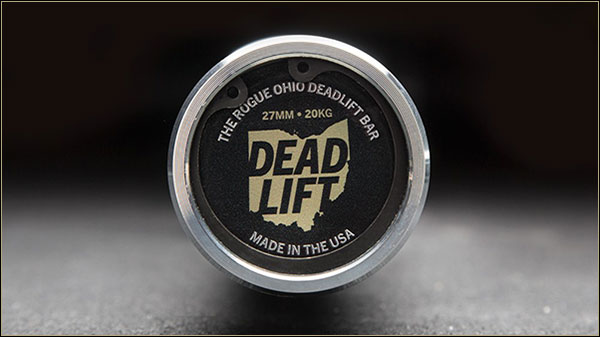
The Ohio Deadlift Bar is a whippy, 27 mm bar intended for nothing else but deadlifts. It has super aggressive knurl, no center knurl, and is more or less a narrower, longer version of the Ohio Power Bar. We even have the same finish options. This is a fantastic barbell but it should be considered an accessory, as it’s fairly useless outside of the deadlift.
The Ohio Deadlift Bar is also offered in Cerakote.
Rogue Ohio Deadlift Bar At-a-Glance
- Knurling: aggressive
- Center knurl: no
- Whippy, 27 mm shaft
- Length: 90.5″
- Loadable Sleeve Length: 15.5″
- Available in 20 kg bare steel or 20 kg zinc
- Made in Ohio $295-$350 in pounds
- Cerakote Edition $385
♦ ♦ ♦
The Rogue Bars Summary (TL;DR)
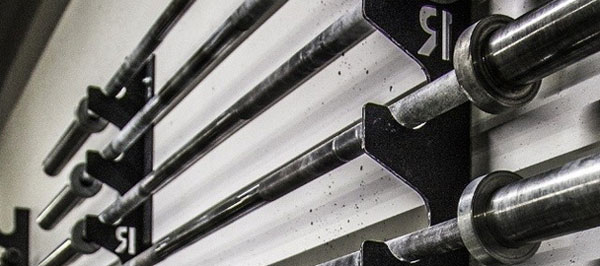
So in case you missed the similarities, let me break it down for you.
For a multi-purpose/CrossFit bushing bar, just remember that the Castro Bar, the Chan Bar, and the Operator Bar are all Ohio Bars by different names. The Rogue Bar 2.0 is unique in that it uses composite bushings rather than bronze, has customizable band grooves, and even costs a bit less, but it’s still an Ohio Bar at its core. The Chan Bar stands out the most as it is the only one of these bars to really stray from the Ohio Bar (knurl depth, placement, center knurl, etc). The SS Ohio is the only one of these to use a different steel shaft entirely.
For 28 mm Olympic bars, you have two steel choices; 190k like what’s found on the men’s Rogue Oly and both Training Bars, or the 215k steel found on the Euro and the Women’s Rogue Oly. Deciding between these bars simply comes down to your desire for bearings or bushings, finish options, and the amount of money you’re willing to spend for performance.
Power bar selection is easier, as you’re basically choosing between finishes and price. The sharp knurl is the same on all Rogue power bars, as is the rigid 205k PSI shaft. If you want softer knurl, the B&R is your bar; otherwise you’re just choosing an OHP variant.
Rogue Barbell Recommendations?
It’s very difficult to make recommendations without knowing exactly who I am making the recommendation to. My wants and needs will differ from yours, and both of our wants and needs probably differ from the next guy or gals needs. That said, I’ll say a few words about what I’ve discovered to be the norm, at least based on my experience operating this site, and talking with hundreds; if not thousands of different people.
The average gym rat is going to be more than content with a powerlifting bar like the Ohio Power Bar. A power bar will serve you well for squats, deadlifts, bench press, the overhead press, rows, and even power cleans. It’s unlikely that you’d ever bend or damage a power bar, so it’s a safe assumption that it will last your entire lifetime. I recommend you go with something with an oxidation-resistant finish if you’re either unwilling or lack the time it takes to care for bare steel.
If you are a beginner or intermediate lifter and you aspire to the Olympic lifts, or you are big into CrossFit, I recommend a 25/28.5 mm bushing bar. With Rogue bars, this would include any of the Ohio variants, the Rogue Bar 2.0, Matt Chan Bar, or the Bella for you ladies. The Bella Bar & Rogue Bar 2.0 is the least amount of money I’d spend on a bar of this type, and ideally you’d go with the stainless steel Ohio Bar, as it’s the superior bar in the whole Rogue bushing-based bar line-up.
Finally, for more experienced Olympic weightlifters, you’re going to want a bearing bar. For women, the Women’s Rogue Olympic Bar is fantastic. It has the 215k Euro steel shaft at the 190k US-steel price. Hard to ignore that bar. For men, the Euro or Stainless Olympic WL Bar is the way to go. There’s no point in spending $500-$600+ on a 190k Olympic WL Bar when you can get an end-game bar for such a small percentage more.
One last thing – don’t leave this page without reading my “Final Words” below. It absolutely applies to this section.
Update: September 15, 2014
Rogue and Matt Chan released this video today. They’re a little late to the party! Still it sums up a lot of this post in a video. Enjoy!
Final Words
It would be negligent of me to not remind you that Rogue is not the only bar manufacturer out there. You may find the best fit for you among all these barbells, but that does not mean that it the best fit for you when other brands are factored in. Barbells are expensive and should be considered investments, so do your homework (and stay out of the box stores.)
Like Me? Share
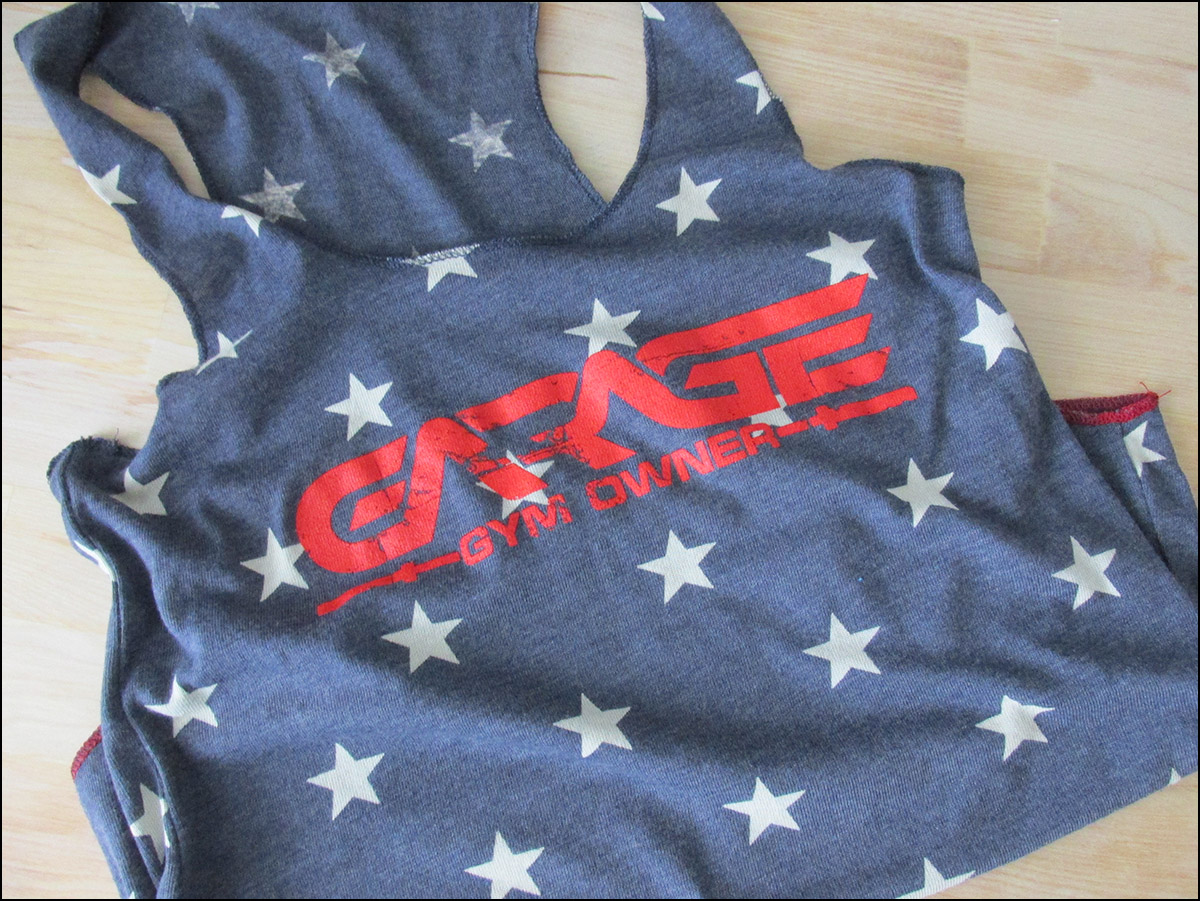

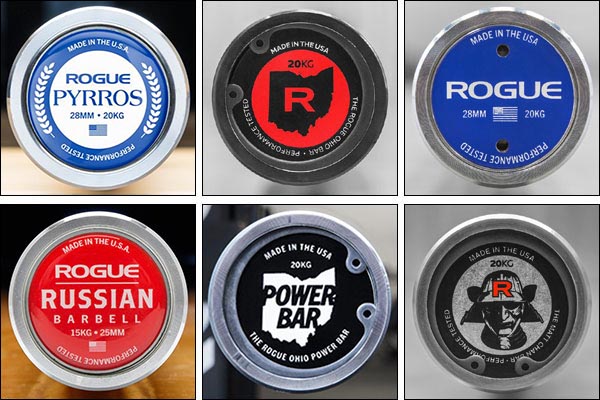
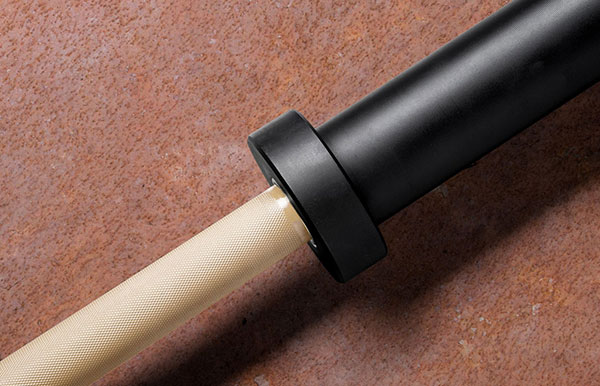

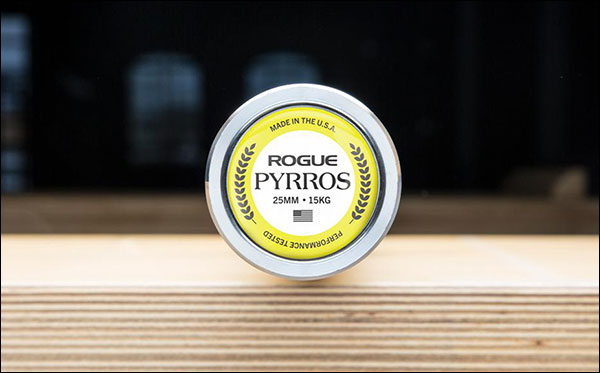
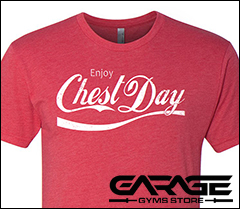
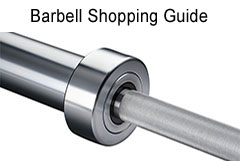
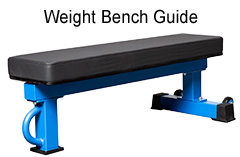
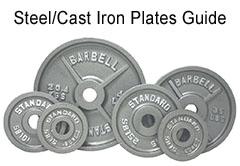
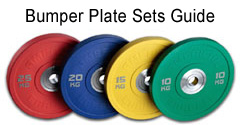
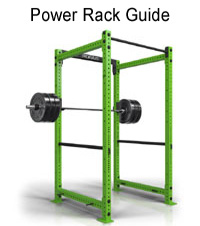
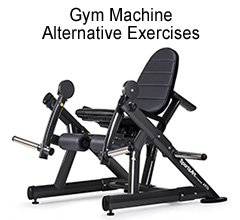

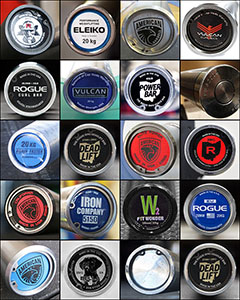

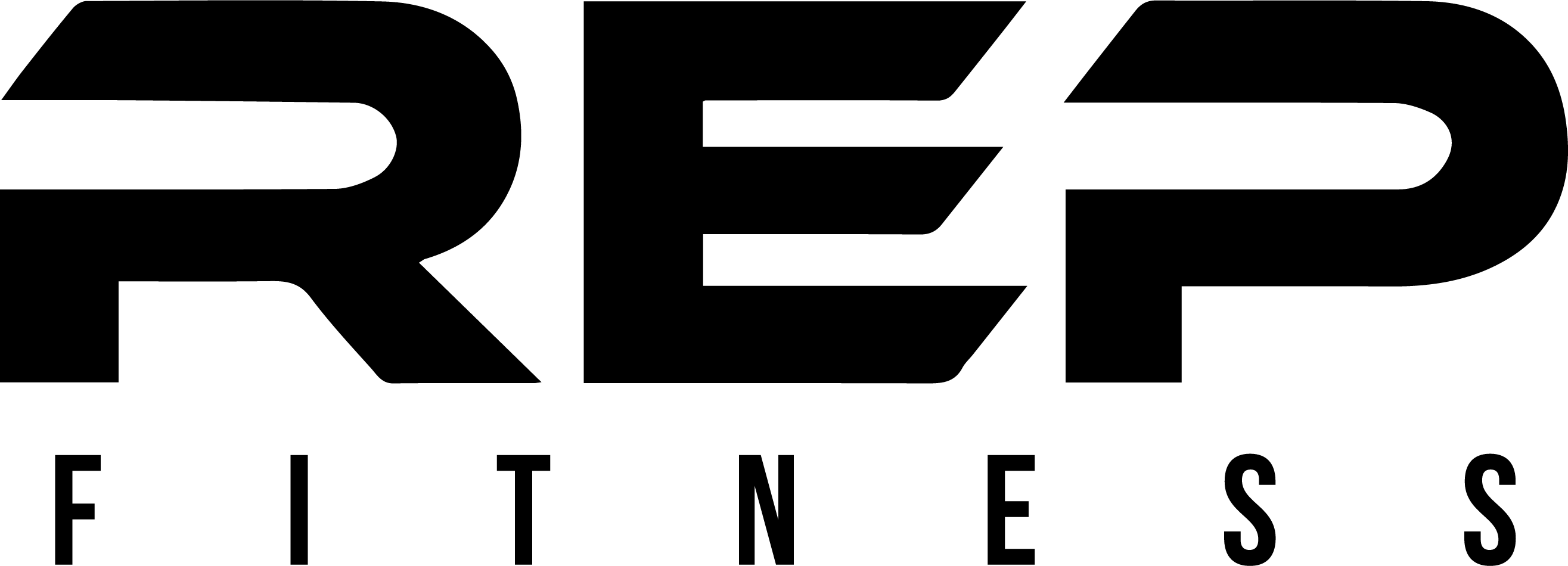
Any more info on a new power bar from rogue? A guess at an eta or anything like that? I was about to buy the rogue power bar but may hold out if there is a new one in the pipes.
I saw a comment by Bill Henniger (owner of Rogue) on the CrossFit forum that eluded to them working on a new Power bar (http://board.crossfit.com/showthread.php?t=87389) and then I saw that teaser image of the bar that I included above on Rogue’s Instagram. Unfortunately I have no more information on it than that. I’ll add it when I hear anything though.
In case you didn’t get the memo, the new Rogue Ohio Power Bar is on the Rogue website… and above as well.
Thanks for a great post!
Would you be able to provide some more information about finish (especially how it affects functionality and maintenance more so than aesthetics)? The Rogue Ohio Bar page (http://www.roguefitness.com/the-ohio-bar) has a great break-down of most of the finishes, and the Rogue Olympic WL page (http://www.roguefitness.com/rogue-olympic-wl-bar) has useful reviews that talk about the difference between the Bright Zinc and the Polished Chrome in terms of knurling aggressiveness, but I haven’t found anything that talks about the difference between Satin Hard Chrome and Polished Chrome. What do you get for the extra $50 it costs for polished over satin?
Jeff, polished chrome is just satin chrome that’s been taken thru the additional step of, well polishing. Satin has more of a matte feeling, more like raw steel, and polished chrome is brighter (shiny), and feels smoother. It’s only the areas of the bar that aren’t knurled that get polished anyway, so I wouldn’t expect a performance difference. The $50 difference is the cost of actually adding that polishing step. I personally wouldn’t pay for polishing; Satin is fine with me, but you know it’s personal preference.
Thanks! I just heard back from customer support at Rogue and they said exactly the same thing. I appreciate the help: I now know exactly which bar I’ll be picking up next.
I want to set up a small garage gym without taking up too much room in the garage (one car). It’s not going to be a full blown box, how does the rogue beater bar compare to these bars? Should I get it for weights (deadlifts included) well under 400 lbs?
If you don’t mind the diameter of 31 mm vs 28-29 mm, and you’re not wanting to spend over $200, then it’ll get you by. There is absolutely nothing fancy or special about the Beater, and it’ll make for a horrible bar for Olympic lifts, but if you’re just general strength training (squats, deads, bench, etc) then sure. I personally wouldn’t buy a beater unless I was literally strapped for cash and just needed to work out, but for a pinned sleeve, super thick bar, the people who buy seem to enjoy it.
If I don’t do olympic lifts, should I wait for the Ohio Powerbar to come back in stock next month or go with the Matt Chan bar? I mostly deadlift, squat, bench, press.
You’d be fine with either really. If you don’t care for the modified knurling pattern of the Chan, save a few bucks and get the Ohio Power. If you’re putting over 400 pounds on the bar, maybe the Ohio is better because it’ll stay rigid at higher weights. If you have any intention of adding Olympic lifts, or even just power cleans, then the Chan would be better for that.
Maybe I missed the memo, or I’m blind to this on Rogue’s website, but what is the weight limits for their true olympic bars? I’m leaning towards the Olympic WL Bar. I getting ready to move into 500+ range. Thanks for the help.
lol ya, you’re not blind, it’s just not there. It’s not a typical specification for the better bars. The PSI rating is the indicator to the bar’s strength. You won’t bend any of the 190k PSI Rogue Bars unless you do something negligent with it. I’m assuming you’re not cleaning 500 pounds, so why the 28 mm WL bar rather than a 28.5 bar or 29 mm power bar? You like all that flex in Oly bars for deads and squats?
A 28.5mm shafted 7 ft bar would experience a stress of 190kpsi in tension if it was loaded up with 1498 lbs total, evenly distributed across both sleeves and with the bar supported in the very center (3 pt bending). I hope this helps.
Any advise or feedback on the Rogue C-70 bar? I have Ohio Bar and like it a lot, but it’s hard to throw a full size bar in the jeep for a traveling workout when the gym isn’t available.
Unfortunately, I’ve actually never even seen that bar, nor have I known anyone to own it. The product page still references the older Ohio Bar, not the new one. I am sure it’s fine for occasional workouts; there was nothing wrong with the original Ohio Bar. You can’t snatch with it unless you’re a short guy though; almost a foot is missing from the space in-between collars.
As a follow up,
I have had the c-70 for about 4 months now. Bottom line it’s everything it’s advertised as, a short Ohio bar. Thrusters, deadlifts, snatch, cleans and overhead squat. I am 5’10 and my grip goes right out to the collars on snatch/ OHS doesn’t bother me but I can see how it could.
No problems so far. Collars are shorter so if you have the wider economy bumper plates its max out at around 315.
Little whip due and a bit stiff due to the short distance. Overall great bar. As a plus it fits in my jeep and in a crowded gym/garage it would work well… Probably why they use it at the games when 25 athletes are next to each other.
Oh nice, I’m glad to hear that you like it and it’s working out well. Thanks for coming back to share that.
Do Rogue still knurl the bar after it has been heat treated to 190 ksi like they did with the ETD 150?
I don’t know, but I’m trying to find out. I love your tech questions and comments btw. Let me know when you have your own lab so I have someone on the inside to pull these bars apart and verify ratings =p
the answer is yes. It is the final step before finishing (coating, polishing, etc.)
Thanks. But a steel that hard is not easy to knurl. Eleiko can knurl about 6-7 bars before they have to throw away the knurling tool.
Yeah I remember that.. I’m sure it’s much the same at Rogue. They do a pretty good job with their knurl. Also keep in mind that Eleiko steel is actually much harder than Rogue’s.
Actually it is and it’s not. Eleiko’s steel is not “through hardened” like most other barbell manufacturers. Eleiko surface hardens their bar shafts, so that it’s like a soft core encapsulated by a hard case. So Eleiko’s bar should be very resistant to snapping. Although I have read about bars snapping because of hydrogen embrittlement. I, for one cannot fathom why manufacturers chrome plate their shafts when a zinc plate is good enough.
Well in terms of the knurling process, it’s that hardened surface that’s getting knurled, not the core. It’s also my understanding that hydrogen embrittlement can be avoided when the manufacturer knows what they are doing. I can’t say who knows enough to avoid it, but are we really worried about bars snapping these days?
Maybe not snapping but bending for sure. Mark Rippetoe had 3 bent Eleikos and he sure wasn’t happy with them or the response he got from their customer service official. That being said, no bar in the world is un-bendable. Remember the bars are never straight from the mill itself; they are bent straight by the manufacturer. Again the definition of straightness varies quite a bit. Some people I think are too anal about having a straight bar. I mean Ivanko are so OCDish about straightness, that the straightening itself has a huge impact on the final cost. Anyway, I have a bar design that I intend to get manufactured in the coming months. Not for production though. The shaft manufacturing process design is driving me crazy. I know the shaft needs to be heat treated, straightened, finish machined & knurled. The order which these would be economical to do will confuse even the most technically inclined.
Well depending on what you’re doing with that bar, straightness is worth being anal about. It’s one thing to have a slight bend to the bar in like a global gym setting where people just back squat and bench, but you do not want a bar that twists in your hands as it corrects in the beginning of a snatch. In any case, I don’t know how in the world people are bending bars, especially decent bars. Anything over a couple hundred bucks should outlive the person who bought it, save for any issues inside the sleeves. Then again, I take pretty good care of my equipment, and not everyone does.
You might see if you can get a hold of Phil Sr. at American Barbell. That guy knows his stuff, and is generally more than willing to talk to like-minded, intelligent people about the technicalities of barbell manufacturing.
Wow. It’s like you read my mind or something. I did have a lengthy email conversation with Phil around Christmas time. He keeps shuttling between his manufacturing facilities across the globe, so he’s kinda busy these days.
Yeah he comes and goes. They all get pretty busy over there, so their follow-through leaves much to be desired. I kinda gave up on it myself, but if you catch him at the right time he’ll dump lots of info on you.
I just found the B&R bar PSI tensile strength change to 190K in Rogue website. not sure if Rogue or York changed something.
Oh wow, look at that. Well that’s not good, is it. I’ll probably be asking Rogue about that on Monday.
Ok I know I’m jumping the gun, but any word on the EU bar yet. I’m eyeing a new bar/bumper set and thinking the EU+190kg’s of rogues new comp plates(4-25’s) might be what the doctor ordered. At $2k delivered the price seems great and my gut says that set will have an IWF sticker on it very shortly
I’ll tell you that the Euro is a very nice bar indeed. I haven’t finished writing about it formally because an injury has prevented me from really pushing the bar, but the thing is beautiful. The grip is great, the spin is smooth, clean, and quiet, and it just feels like an expensive bar… which I suppose should feel that way as it is pretty expensive. I like it a lot, and I think about how many people are checking back for that review all the time and feel awful that it’s not done.
I also have the 2.0 training kilo bumpers and I like those too. They’ve got the right amount of give/bounce for my personal tastes, and so far I haven’t had any wear issues. Also the colors are very vibrant. I know cosmetics on bumpers is whatever, but it is nice that they look nice as well as perform.
I’ve got a question. I just ordered both the rogue ohio power bar (black zinc finish) and the bella bar 2.0 (for my gf). They are still in the package and I will not be using them until our house is built next September 2016. In terms of maintenance, is it better to keep them in the package? I already started peeling the top but I can enclose it again if that is the best way to prevent oxidation. Or would I still need to oil it up every now and then despite not using it. I will be storing them in my parent’s basement and I live in Toronto Canada so I’m not entirely sure what to do.
These bars should be in plastic bags inside the tubes; you’d be able to tell easy if you started to peel the tube or remove one of the packing caps. Neither of these are bare steel bars so they should be okay in the bags, but over a year in a basement is a rather long time. You might want to email Rogue and ask them what they think. Worst case scenario is they suggest to put a coat of oil on then them wrap them back up. Still, I’d feel better about them answering that since I’ve personally never tested such a thing.
Great writeup. I already have a Texas Power Bar for the heavy stuff in my rack (squats, bench, deadlift). If I were to get another bar for outside the rack would it make sense then to jump right to the Olympic training bar for the floor work (cleans, snatches, etc)? I’m not an Olympic lifter per se, just someone who likes to do all types of lifts to keep things fresh. I was thinking of getting the Chan bar but now I’m thinking I should go for more whip if it’s going to be mostly for Olympic lifts (anything I do outside my power rack basically). Thanks for the tips
You don’t necessarily have to spend the kind of money it would cost to get a high whip bar if the Olympic lifts aren’t your forte. If you’ve already got a strong clean then you may benefit from it, or if you want a bar that will stay relevant as you improve in the clean and jerk then by all means go for it. If either of these sound about right, focus in on the 28 mm bars rather than the 28.5 mm. Bearings or bushings in that 28 mm bar also depends on your numbers now, and down the road. Bushings will go a fairly long way, but not all the way.
Once you decide on the configuration, it’s really just a matter of deciding how much you’re willing to spend for the additional features like chrome, stainless, etc.
How do you like that TPB? Is it the Buddy version or one of the others? I guess you’re immune to the knurl if you’ve been using it a while.
Thanks. I have the Troy TPB which I was told is the exact same thing as Buddy’s. I love the aggressive knurl for the power lifts. It feels like I’m locked in. I’ve been hitting PR’s in every lift since I’ve bought it (but that’s probably just because I’m more focused these days).
Thanks for the tips. It’s interesting to find out that most Rogue bars are the same except for the finish, sleeve (bearing vs bushing), and knurl. At first glance it seems overwhelming with all of the choices. Thanks for simplifying it. Any feedback on the composite bushings in the Rogue 2.0? Is the Ohio bar worth the extra cost to get the copper bushings?
I generally prefer bronze bushings, but in the case of the Rogue Bar 2.0 and the Ohio; two bars that are nearly identical, I think the only true advantage to the Ohio is the choice of finishes. But even that doesn’t matter at this moment because the chrome Ohio is not available for the time being. Technically even the Chan is an Ohio Bar as well, but it of course has those knurl features; including more aggressiveness than the either the Ohio or Rogue Bar. Though having said that, I wonder if you’ll find the Rogue Bar to be weak in the knurl department considering your experience and daily use of the TPB.
Hey Jb,
Thanks for all the great information. Just wondering if you have any intel on whether Rogue will be making the Ohio bar or Chan bar available in satin chrome finish in the future? I am not much of the black zinc finish on barbells now a days. Also, other then the up keep of the Castro bar what are your thoughts on it in regards to weightlifting? Looking forward to hearing your thoughts and gaining some valuable knowledge. Take care
I do not. It’s not the first time chrome has disappeared from those bars, and it was gone for some time before it returned (briefly). My advice now is to look at something else entirely if you don’t want zinc. Chan doesn’t have much of alternative because of that reduced knurl, but the chrome Ohio has plenty of alternatives out there.
The Castro is just another Ohio. Matter of fact, it’s completely normal to think of all the Rogue bushing bars as Ohio’s as none of them vary functionally; with the exception of maybe the Trainer because of its 28 mm shaft. All Ohio variations are fine for WL up to a point though; about somewhere in the intermediate range (which handles all CF Oly weights; which is of course the point for these 28.5 mm bars.) There are of course bearing bars to move into, or even some better spinning bushing bars from other manufacturers with 28 mm shafts once the Ohio’s performance starts to suffer from heavier weight.
Thanks for your super-helpful blog.
Do you know of any hybrid bars like the Chan bar that come in the women’s size (15 kg, 25 mm diameter) but DO include the center knurl. It’s just so surprising to me that this doesn’t exist already given the importance of the low back squat (in Starting Strength and CrossFit).
Alternately I might be interested in a higher tensile powerlifting bar for my wife, since she’s not doing the Oly lifts yets. But those seem to be hard to find too — with Rogue or elsewhere.
I’m very happy with my Rogue Powerbar + Rogue Oly bar, and I’d like to be able to duplicate that setup for her smaller hands.
Thanks,
-Jeff
I can’t even think of a woman’s bar off the to of my head that has center knurl. IWF doesn’t require center knurl for 15 kg bars, and there are no women’s power bars. About all I can suggest is using a 28 mm bar back squats (for her) and having a 25 mm bar for everything else. The added thickness won’t be a big deal with the bar on the back since the hands aren’t supposed to take on any of the load in a squat anyway.
Power bars are still considered a little more specialized than Olympic/CrossFit bars, so their selection is still small by comparison, and in your situation it isn’t helpful that women lift with men’s bars in that sport.
Great advice… thanks!
I am looking to pick up another bar, so that my wife and I can lift at the same time. We mostly do powerlift exercises, but i have been adding some cleans and want to start working on oly lifts. Current bar is a York B & R that I like alot, especially the grip/knurl. I am not lifting very heavy yet ( 325 DL , 305 SQ) and oly lifts are strictly sub 100 right now. I am considering the Rogue Castro and AB Training Bar. Is there anything else you would recommend in the 2-350 range that would serve better than one of these bars, and of these two, which would you see as the better option as a multi-purpose bar?
Thanks for al the great info you provide.
The Castro is just a bare Ohio, and the AB Trainer is really quite similar in terms of performance. They have differences like the finish and the composite vs bronze bushings, but these things don’t change how they function. Both will serve you. You already know how bare steel works since you have a B&R so I won’t bring up the pros and cons of that.
The California Bar is worth considering as well. It’s like $25 more than the Trainer, but they supposedly overhauled the sleeve assembly to make it nicer than the Rogue Bar 2.0/Ohio rather than just the same. I don’t have much in the way of details on that, but I do plan to pick one up here soon.
Depending on how much you want to Oly lift, you could pick up something like the Vulcan Elite, AB Precision, or Rogue Trainer. They are all 28 mm Olympic bushing bars, but they have more than enough strength for your power lifts; especially the Elite with it’s 220k+ PSI. Your wife will probably prefer the slightly narrower shaft since it doesn’t sound like you’re looking for a 25 mm bar for her. The thicker 28.5/29 mm bars for power lifts is for the uber strong. 600 pound deadlifts…sure use a stiff bar. 300 pounds… use whatever you want. You’ll care more about the feel in the Oly lifts than you will while benching. Just a thought.
In any case, you’re not considering any bars that should be avoided. Between a Castro and Trainer is more about preference with that bare steel/chrome, dual marks/Oly marks. Btw, neither of these have center knurls.. I’m assuming you’re not wanting that. I think the Elite does have it, but it’s passive.
Personally, I really like the raw steel feel and the knurl on the B&R was a huge upgrade from what I was used to. I noticed that my overhand grip in the deadlift increased 25-30 lbs. just due to the better knurl on the bar. What I was looking to get was something I can grow into, but will still work well for power lift applications.
I guess at my age, 50, I don’t need to worry too much about outgrowing them, although I am hoping to be 400+ by summer in the DL and Squat. The Oly lifts I will probably keep on the lighter/high rep crossfit side of things, but who knows. I had no idea I was going to enjoy weight training as much as I do when I started with it a year and a half ago.
I am looking to skip the center knurl on this bar and my only real aversion to any of the coated shaft bars is the fact that I never liked any of the ones at the Y where I started lifting. Of course, they were not very good bars at all. Either very little knurl and slippery or they were stolen from Gordon Ramsey’s kitchen.
Would the AB Training Bar not have the same sleeve setup as the California Bar with just different coating? At $250.00 with $25 shipping, it seems like a good alternative and probably have a bit more whip than the Castro?
The idea behind the California bar is to be in direct competition with the Rogue Bar 2.0, but at the end of the day the California, the Black & Chrome, and the Trainer are all pretty much the same bars. AB wants that CA to be their flagship bar like Rogue has the 2.0, so it’s getting all the upgrades and attention lately… that’s the only real reason to favor it. I don’t think that you’ll notice any difference in feel or flex between any of these bars; Castro, RB, CA, etc.
It sounds like you do need to stick with either the bare steel or stainless because those are the two with the grips. The SS WOD would have been perfect for you but that thing is finally all sold out. The only remaining “deal” on stainless is that Precision Training, but that’s right at the top of your budget and that’s the low price. It’s normally about $500. Still, you get the grip without the rust.
I agree with you on the SS WOD. I came across your review on it about three weeks after I had purchased the B&R and I was jealous. Almost bought one, but had some things pop up that derailed my plans and I was hoping there would be enough of them, so I could get one once I was a bit more set. Oh well. Ya don’t always luck out.
Probably rhetorical, but is the Precision worth the $100 premium over the Castro?
Yeah sorry you missed that. It was a hell of a deal.
Is it worth $100 for the Precision over the Castro? It would be to me. I’m quite sold on the stainless bars. I have no issues with bare steel; it too is a great feel and the prices for bare are generally good, but with all the low prices AB has had on stainless it’s just hard to pass up. Same feel, no maintenance.
The Precision is simply a much nicer bar. I’m not sure I’d spend $500 on it at regular price (only because I think it’s too close to bearing prices to not make that next jump), but at $350 it’s a steal. That said, $100 is $100 and I can’t argue with that since both bars will work. Toyota or Lexus, ya know? Both still get you to work in the same amount of time. One just rides a little better =p
Yea, the money is a concern, but so is having the best equipment you can afford and to me the bar is the one part of equipment you splurge on when you can, since it is the piece you have to be in contact with to get the job done. I’m going to go with the Precision.
Is the dearth of raw bars just due to cosmetics and upkeep, or is there any performance gains acheived through the coating processes?
Thanks for all the time you spent discussing this with me.
Patrick
Yeah pretty much just the maintenance, and the hours it takes to remove rust if you fail to keep it from even forming. But bare steel is normally the only real raw option for folks since stainless has typically been priced way out of most peoples budget. It’s the downside to getting a superior feel for those that can’t afford stainless… or simply don’t know about it. It’s been a rather unknown shaft material up until recently. I mean, it’s been around but so few obscure companies offered it that you just didn’t see it. You certainly wouldn’t run into stainless at the local Gold’s or CF box.
Finishing a bar doesn’t do anything other than protect the shaft. There are a few minor exceptions to that as there are a very small amount of elite bars that have such a significant chrome moly finish that it contributes to the total tensile strength of the bar, but that is not the case with any of these mid-range multipurpose bars. Matter of fact the only bars that I can think of are the Eleiko WL Bars and the Vulcan Professional WL Bar.
It’s not just the stainless though for that $100. It’s a nicer bar overall, and as your Oly lifts improve you’ll be glad you have that over the 28.5. To put it in a way that might make you feel better, it’s basically a Vaughn, Vulcan Elite, or Rogue 28 mm Trainer (all of which are great bars btw) for the same price or less but it also happens to be stainless with chrome sleeves rather than some other less expensive combination of phosphate, zinc, and chrome.
I guess my line of thinking is that the maintenance on the raw bar is so minimal, and once you get enough penetrating oil on the thing, it will be even less, I’m surprised how few mid-level bars are offered in a raw only version. I mean, my workroom is in a detached two car garage in TN and even having the B&R over the summer in a lot of humidity and heat, I only had to clean it once or twice to keep it looking, if not new due to use, definitely clean and rust free.
I was guessing the internal design and operation of the Precision was going to be a big upgrade from the others and the stainless shaft just sealed the deal in the end.
Thanks again for all your help and the great information you provide.
Patrick
Yeah you got it. Good luck.
Love your guides! I’m almost done building a heated & cooled room inside my new shop, and I hope to fill it with lifting gear soon. Regarding my upcoming bar purchase, I noticed Rogue has an Ohio bar with a stainless shaft and chrome sleeves for $350. Composite bushings, dual marked, no center knurl, 195k PSI, and 28.5 mm shaft. I’m guessing it’s a somewhat new addition, since you didn’t mention it in this guide. Anyway, just wondering if you had an opinion on it. Thanks very much for all the valuable info you provide here, this site has been a real treasure trove for me!
That is indeed a new bar – released within the last week. I’ve got one on order, but there is no reason to not to think that it’s any less of a bar than the other Ohio variations. I’ll update after I’ve lifted with the thing.
Your guides and reviews are great, they’ve been a huge help to getting my Garage gym setup and I appreciate all the time you’ve spent sharing the info and tips!
Do you have any first impressions on the New Rogue Stainless shaft Ohio bar to share yet? I see you had it on order last week, not rushing you, just curious :)
Thanks in advance!
Yeah I have it already – been playing around with it and starting the review. I like it. Knurl and grip is 10/10, composite bushings are quieter than Rogue’s cast bronze bushing bars, and quality is pretty much on par with all their other bars. I’ll get more specific in the review, but yeah I think it’s a nice bar.
The price point is pretty much perfect. Considering that stainless is just rust-proof bare steel, paying $200 more like you would with an American Barbell stainless bar is just too much. But less than $100 between the SS Ohio and say ordering a raw steel Ohio is a reasonable trade-off to not have to deal with oxidation, and even better is that the knurl itself (stainless feel aside) is arguably better than it is on standard Ohios.
Thanks, sounds good! Yea the price seemed great for a Stainless bar, so I thought I’d ask to make sure it didn’t have any trade offs or a reason not to buy it. Just waiting to see if it comes up as a random MBF sale now hopefully.
I look forward to reading the full review!
Thanks for the preliminary review! I actually already ordered this bar along with a bunch of other equipment from Rogue in order to take advantage of the shipping deals this week. I figured it was probably a pretty safe bet, and I’m glad to know that your first impression has been positive. Thanks again!
John,
I have been eyeing the B&R 2.0 bars for quite a while. At the end of the day, I like my Ohio Power Bar (bare steel); however, I don’t love the aggressive knurling. Granted, I only use my Ohio Power Bar for squatting and pressing. The knurl is overkill.
On to the B&R 2.0. These look to be manufactured in house now. My primary concern is about the distance between the sleeves. This looks like an 84 inch bar compared to the 86.52 inch Ohio Power bar.
Currently, I use a Monster Lite RML-6100 rack. The distance between the uprights is the standard 43″. Adding three inches to each side (width of j-cups), I am up to 49″. On the Ohio Power bar, the website shows a distance between the sleeves of 51.5″ and I can confirm there being a little over an inch on each end between the collar and the outside edge of the j-cup.
So the question is…..am I going to have an issue re-racking the B&R 2.0 in my rack? I guess people with 2″ wide uprights have a little more room for this….? I have been wanting a pair of the sandwich j-cups anyways (for easier re-racking of squats, primarily).
I suppose I need to check with Rogue, but it looks like it will be an issue. The sleeve lengths are the same (16.25″). Kind of weird that they would do that; however, it is a 20kg bar vs 45 pound bar and maybe that’s the extra pound.
What to do…what to do…
I measure 51.5 inches in-between sleeves on the B&R; and it’s full length. I don’t have the 2.0, but the specs are supposed to be unchanged. I cannot imagine them having made that bar any shorter, but I also never noticed that on the product description before. It doesn’t hurt to ask them though but I’m pretty sure there is nothing different.
Thanks for taking the time to measure, John! I sent an email to Rogue. Hopefully the specs come back just the same (51.5″). If it is, then I will likely go ahead and pick one up. Not sure that I need it, but options are good and sometimes I get tired of the aggressive knurling on the Ohio Power bar (more for squatting than pressing).
Side note: I think I am still going to get the sandwich j-cups to give an even wider margin when re-racking the bar. I’ve never hit the collars, but once in a while my grip is wide enough that I have to watch my fingers getting pinched.
You just like buying things, admit it =p
Ha! Takes one to know one! But…yeah, guilty.
I’ve had a good run in the last year. My garage gym has been fully funded by selling off valuable personal items (non-household money). So far, I’ve spent about $5,500. I have another $2,000-2,500 worth of items for sale to buy more gym equipment. Some could be seen as necessary, but most would be considered wants.
Let’s see…B&R bar, Butcher V2, Monster bench with Fat Pad, Monolifts, Bar storage, Plate Tree, SS Lat pull down bar/DIY pulley system with a few handles, a few other rack accessories, bands, etc.
Boom…broke again. Haha.
Look on Facebook – I put up a picture of my new bench. Took so long to get, but totally worth the wait.
Looks great! Looking forward to hearing your thoughts after you get more reps with it.
I know at some point I’ll venture into getting dumbbells and an adjustable bench, but I’m not even close to that level of lifting yet. Thankfully, that’s one area of my garage gym that I don’t mind neglecting for now.
Side note…how much would you say you’ve invested in your gym? 5k…10k…20k?
Just curious. Mentally, I think I am going to hit the wall around 10k unless I turn competitive.
Oh gosh I don’t know. I mean, so much of what I buy is for the site so I can’t really count it as an investment in the gym itself. I’ve definitely dropped some cash though. Still, outside of reviews I use a couple bars, two benches, plates, rack, GHD and the blocks. If you ignore the bulk of the redundant equipment, my gym is much the same as everyone else’s. I mean it doesn’t look that way looking at it, but it is.
Based on your experience, how does the knurling on the B&R 2.0 bar compare to that of the standard Ohio or stainless Ohio bars?
On a side note, I have pressed Rogue for information on what their next stainless bar may be. Without specifying, they have stated that they will indeed expand the line into some of their other current bars. Because of the fact that the B&R also uses the same 29mm shaft as the OPB, it would seem to be an easy transition into a SS B&R.
It’s closer to that of the Ohio than SS Ohio. Actually with Rogue’s variant of the B&R I believe it the regular Ohio Bar are identical (I have the York B&R). The SS is a unique knurl, slightly more aggressive, but noticeably so.
And you’re probably right in that assumption. It’s an easy transition, and a profitable one, so why wouldn’t they.
Hey i decided to Buy a Rogue Ohio Bar as an Allround Bar. Most of the Time Squat, Bench, Deadlift, Press but sometimes Oly Lifts and Wods.
I cant decide if the Stainless Steel oder the Black Zinc. I train at Home in Europe with no Problems with Humidity. So i think Rust wouldnt be a Problem. On the other side i dont Care about the little more Money for the stainless steel
So is this a NoBrainer or is there any Reason why the Standart Black Zinc would be better Choice for me ?
I mean at Rouge there are over 140 Reviews for ohio bar and only 12 for the stainless steel. It seem that the people love the standart black zinc ?
Black zinc does not wear well whether it’s exposed to moisture or not – it just doesn’t keep over time. Bright zinc, chrome, and especially stainless are all infinitely better than black zinc, and the stainless Ohio actually has a superior knurl to the standard Ohio bars making it even better still. If you can afford the difference, it’s a better choice.
Also the stainless variants is new while the standard collection has had years to accumulate reviews.
I’d choose the stainless version every day of the week and twice on Sunday. It isn’t necessarily environmental humidity that always causes oxidation on the bar, but rather consistent sweat, skin oil, and grit/grime trapped in the knurl.
Not to mention the knurl is amazing on the stainless version and grip is that much better since it’s a bare steel bar.
It’s well worth the cost.
So it seems Rogue is making a Cerakote Chan bar. According to the description on the boneyard Chan bar, their first run is only boneyard because the center knurled is more passive than they wanted. Looks cool with the Chan logo actually on the bar itself.
Ya soon everything will be Cerakote and stainless, no doubt. I’ve got no problem with that. I’d probably buy a Cerakote Chan if I didn’t have the old chrome one. I do dislike that ceramic on the sleeves though. I hope that isn’t the plan with the final product, but I have a feeling it will be.
Hi, what do you think about using bars for landmines? Does it ruin the bar quickly or is it more of a long term concern? Only planning on having one bar to start out so don’t have a beater to dedicate to it…
Well most landmines are just steel tubes with powder coating with no plastic liner of any kind, and they have a semi-sharp ridge at the opening where the bar slides in (it’s just scheduled pipe cut to size after all). They also tend to have a larger diameter opening that is required to fit a bar sleeve. What ends up happening is when the bar is lifted from one end, the bar first moves within the tube a bit which can cause some serious nicks in the finish and even the steel if you’re working with enough weight. Additionally, there will be times when the bar actually slides out of the tube a little bit while it’s being pressed into that lip, and that will cause sleeve damage as well.
With a beater no one cares, but I don’t suggest using a nice bar in a landmine unless maybe it’s a bare steel bar. You’ll still get some nicks but you won’t be rubbing off a finish at least. Honestly I’d find some $40 piece of garbage on Craigslist if you’re committed to landmine work. Even outside of those movements it’s nice to have a second bar in the gym.
The Pyrros Bar appears to have dropped to $595 with free shipping. I am somewhat cheap, so I’m going to see if it drops below $500 for Black Friday. I have an Eleiko Comp bar (bought used from the training room in the 2015 Worlds in Houston) which I like a lot, but which has a nasty habit of tearing up the web of my thumb (taping doesn’t help). If the Pyrros bar is as whippy & doesn’t tear up my thumbs, I may sell the Eleiko.
For anyone who’s in the market for a quality Olympic bar, it seems like the price-to-performance ratio is becoming quite good. An IWF-spec bar designed by one of the greatest weightlifters of all time, manufactured out of stainless steel in the USA, and just north of $500? Just a few years ago this would have been unattainable at any price.
Perhaps Crossfit has had some positive effects after all. /ducks
I was originally thinking of getting another bar like the Ohio but want to work on the oly lifts a bit more. Would the Rogue 28mm Training bushing bar be suitable for a multipurpose bar (presses, deads, squats, oly lifts, wods) even though the product page says it’s for oly lifts only? Might be kind of dicey for bench or overhead press. It seems like this bar is a competitor to the AB Precision Training Stainless but which is the better performing and better quality bar?
Finally, at one point does one need to start looking at bearing bars for the oly lifts?
You can definitely squat, press, and pull an Oly bar in addition to cleans and snatches. Honestly unless you have some pretty big lifts you probably won’t even notice the difference outside of the shaft diameter (as in literally the size of the shaft, not the change in elasticity.)
You may not ever need a bearing bar. If and when you do you’ll just know… and I know that sounds a little condescending but I don’t mean it like that at all. Basically your clean and jerk will just be so impressive that you’ll feel the shaft sticking/hanging in the sleeves during turnover. It just won’t feel like a smooth rotation. Considering the bar is free-floating in space at that moment, it’s going to have to be a pretty big lift. American Barbell’s bushings are so reliable that you could probably pull as much with one of their bushing bars as any bearing bar.
Some people just like to buy a bearing bar right out of the gate because the assumption is that it’s just better. It’s almost always unnecessary though, especially if the cost difference matters to the buyer.
No offense taken at all, I read the site to be better informed and value your opinion. My concern was about comments stating that oly or bearing bars were unstable and hard on the wrists for bench press.
Do you have any other recommendations or are the AB and Rogue bars good choices? I’m having a hard time deciding because the AB is relatively expensive compared to the boneyard Rogue Training and Oly WL bars but in the end I don’t mind spending more to get a great bar that will be versatile and last a long time. Including shipping, the AB Precision Stainless is about $500, the Rogue 28mm Training Stainless (boneyard / no warranty) is about $325 and the Rogue Oly WL Stainless (boneyard) is $375 but is a bearing bar. What would you go with?
Well the truth is that I’m a huge AB fan. The bar I train with when I’m not reviewing something is an AB. I think they have not only the best bushing on the market, but they also have an extremely impressive knurl considering how moderate it is by comparison (not so much to Rogue, but to say a Vulcan or Eleiko). Prices though? Yes, kind of high. No argument there.
The Vulcan Elite Oly Bar (bushing version) is also a great option but I feel like it will feel more elastic in a really heavy squat. It has more whip than the Rogue or AB and has comparable knurl depth (not too aggressive with any of these), but there is no stainless option on this bar and it looks like you’re looking at the SS bars; which I get.
Also incidentally, bars with the particular type of needle bearing that AB uses do not spin erratically and are not going to be hard on the wrists when pressing. Matter of fact, the sleeves feel tight compared most other bearing bars, yet they are smooth and reliable under literally any amount of weight you could load up. The same actually goes for their bushings. They don’t just spin all crazy with no weight, but when they need to spin they spin every time under any load.
Makes sense, so the smooth rotation under load is far more important than the amount of spin. I’ve seen videos of the spin on the Rogue Training, Oly WL and the AB bars and the AB bars all spun a lot less. In fact, I think the Rogue Training bushing bar spun almost as much as the bearing Oly WL! I’ve also seen someone mention the AB SS Comp bearing bar didn’t spin that much either. I mistakenly thought this meant the bushings and bearings for AB were inferior.
I’m really curious though, aren’t bushings a pretty simple design? What is it about Rogue’s bushings that make them spin so much and what makes the AB’s bushings spin more reliably under load even though they spin less? Is it because of bronze vs composite or something else?
Yeah you can find some videos of $200 bearing bars where the sleeve spin unloaded for days. It’s pointless. There are some who haven’t ever tested an American Barbell bar beyond doing a similar sleeve spin test in a rack, or just simply don’t understand that this test means close to nothing.
If you put an American Barbell bushing bar on a set of spotters and load it to the hilt with plates, you will be able to spin the shaft (slide the bar up and down the spotters) within the sleeves without transferring motion to the sleeves and plates. You take almost any other bushing bar and load just two wheels and you’ll find that there is enough compression on the sleeves and bushings to transfer some movement to the plates. More you add, more the energy is transferred to the plates. Doesn’t mean anything that you can’t crank the unloaded sleeves of an AB bar in the rack for more than a couple rotations. Says nothing about actual performance during a lift.
The reason their bars are superior to most in this regard is simply because they are spending a little more on the bushings. They’re using industrial composite bushings, and these just don’t compress and deform under load like a lesser composite bushing does. Having said that, during a lift, the shaft does spin easier within the sleeves than it does sitting in a rack simply because the bar is basically in flight. But still, the better the rotation the further that bar will take you (the longer before you potentially want bearings.)
Bronze has always spun really well when it’s new and well lubricated. All the parts are perfect, no dust or chalk build up yet, etc.
Don’t get me wrong here. To a certain extent this is all splitting hairs. It’s not as though there is anything wrong with Rogue’s bushing bars.
Wow yeah, I just saw the video you made of spinning the 455lb loaded AB SS bearing bar on the spotters and the plates were completely still, that is impressive! Even their bushing bars can do this??
Not to that amount of weight, but they go a lot further than all the bronze bars I’ve tried that with. I should probably test it again to get a real number.
That would be great, I’d be very curious to see how Rogue’s Training or other bushing bars hold up against AB’s bushing bars with that test. Maybe an article clearing up all the misinformation on bushings, bearings, spin, spin under load and who actually needs it so people don’t unnecessarily spend more on a bearing bar or buy a cheap bearing bar over a good quality bushing bar.
We just moved and are getting ready to do a small home gym. My head is about to explode from all the different bars lol not even just rogue but fringe and titan and hell anywhere even amazon!!! I was just going to get the Bella zinc but I really do want to improve oly lifts. I had access to the oly bars at my old gym and they’re wonderful!!! I don’t wanna pay that much here because it’s so humid and anything I get is sure to be ruined by the end of my 3 years here in Louisiana. I’m wondering the difference between the training bar, the stainless Bella and the zinc Bella. I do also weight lift. Thanks!!!
Lots of bars, I know! So the good news is that functionally there is almost no difference because they are all 25 mm, 15 kg, moderately knurled bushing bars with 190k shafts.
Louisiana doesn’t have to ruin the bar – if you go with stainless steel then it won’t be ruined. Zinc will look good for a while but ultimately lose it’s ability to prevent rust. Cerakote will be fine too in terms of oxidation protection but the stainless will feel better in the hands (Cerakote + Rogue 15 kg Bar = no knurl to speak of.)
I know you didn’t ask about them specifically, but please do not buy a Titan bar, and do not buy your barbell on Amazon.
Thanks for the in depth reviews,
Currently having a tough decision on getting a bar for a home gym. Generally I focus on the main 4 lifts but would like to have the option for basic oly lifts (mainly just power cleans). Looking for a 28.5mm shaft and in the ideal world a center knurl (although if there is one bar significantly better without a center knurl I am open to it) have been looking at rogue 2.0 and ohio bar. Have you got a suggestion between the two? My only concern with the ohio bar is if it will spin to freely and feel unpleasant for benching. Open to other brand suggestions outside of rogue as well although I am UK based so options are a bit more limited.
Thanks
Neither of these bushing bars – virtually no bushing bar really – will spin erratically during the bench press unless you’re doing something wrong, and I doubt that you are. You’d really have to be benching with a bearing bar loaded with imbalanced plates for there to be a chance of setting the plates spinning. Bronze, composite, stainless steel.. it doesn’t matter. Bushings just don’t have the ability to turn spin like a bearing, so I wouldn’t worry about that factor too much.
The Rogue 2.0 is basically an Ohio Bar. Most of Rogue’s 28.5 mm bars are variants of the Ohio Bar, even the Echo. The knurl is generally the same as well, though this is not the case on the Chan and the SS Ohio Bar. You can pretty much buy on price, finish, or in the case of those two more aggressive bars I just mentioned, knurling.
Thanks so much for the help.
I was also considering the OHP which seems to so wildly well regarded. Appreciate it is a 29mm bar but I am not completely against that. My only real concern is the how aggressive the knurl might be. Appreciate its a really subjective matter but I am going to be sharing this bar with my girlfriend and i’m not sure how she will cope. I have used eleiko olympic bars in the past, appreciate its a broad statement but would it be more aggressive than those? Is it significantly more aggressive than the rogue 2.0 or ohio bar?
Yes the Ohio Power Bar is significantly more aggressive than the standard Ohio line. You can see a few images here (https://www.garage-gyms.com/rogue-stainless-steel-ohio-power-bar-review/), but I realize that images don’t always do it justice. Keep in mind that the center knurl of the OPB is identical to the outer knurl.. it’s a bit much for cleans and high-bar squats. Very sharp.
I would say that the OPB will feel more aggressive than all Eleiko bars except for maybe the Comp Power Bar. I don’t think even the Comp Oly Bar compares to the OPB, though that too is a pretty aggro bar, especially for an Oly bar. If you’re coming off a Eleiko Performance Trainer, XF, or the older Sport, you’ll definitely notice a difference in aggressiveness.
I am specifically looking for a bar to Bench press, Spoto press, Close-grip bench, and Bench press with a Slingshot…I already have a deadlift platform and The Black Zinc Ohio Deadlift bar…I am in the market for a Power Rack, Weights, and a bar to simply bench with. My bench max is 320lbs. My Slingshot bench is 355lbs. I am conflicted between a Ohio bar in Cerakote or Stainless or a Ohio power bar in Cerakote or Stainless…I only pull once a week but, I plan on benching at least twice a week…This bar will get used significantly more than the deadlift bar…I am a 55 year old Grandfather who is going to keep on lifting…I am @chocolateviking on Instagram. You can clearly see in my videos that I am an old-fashioned lifter. Thank you for your help
I’m a little confused by the sentence “I am conflicted between a Ohio bar in Cerakote or Stainless or a Ohio power bar in Cerakote or Stainless”. Do you mean an Ohio Power Bar vs the Ohio Bar? Or are you just trying to decide between the finish?